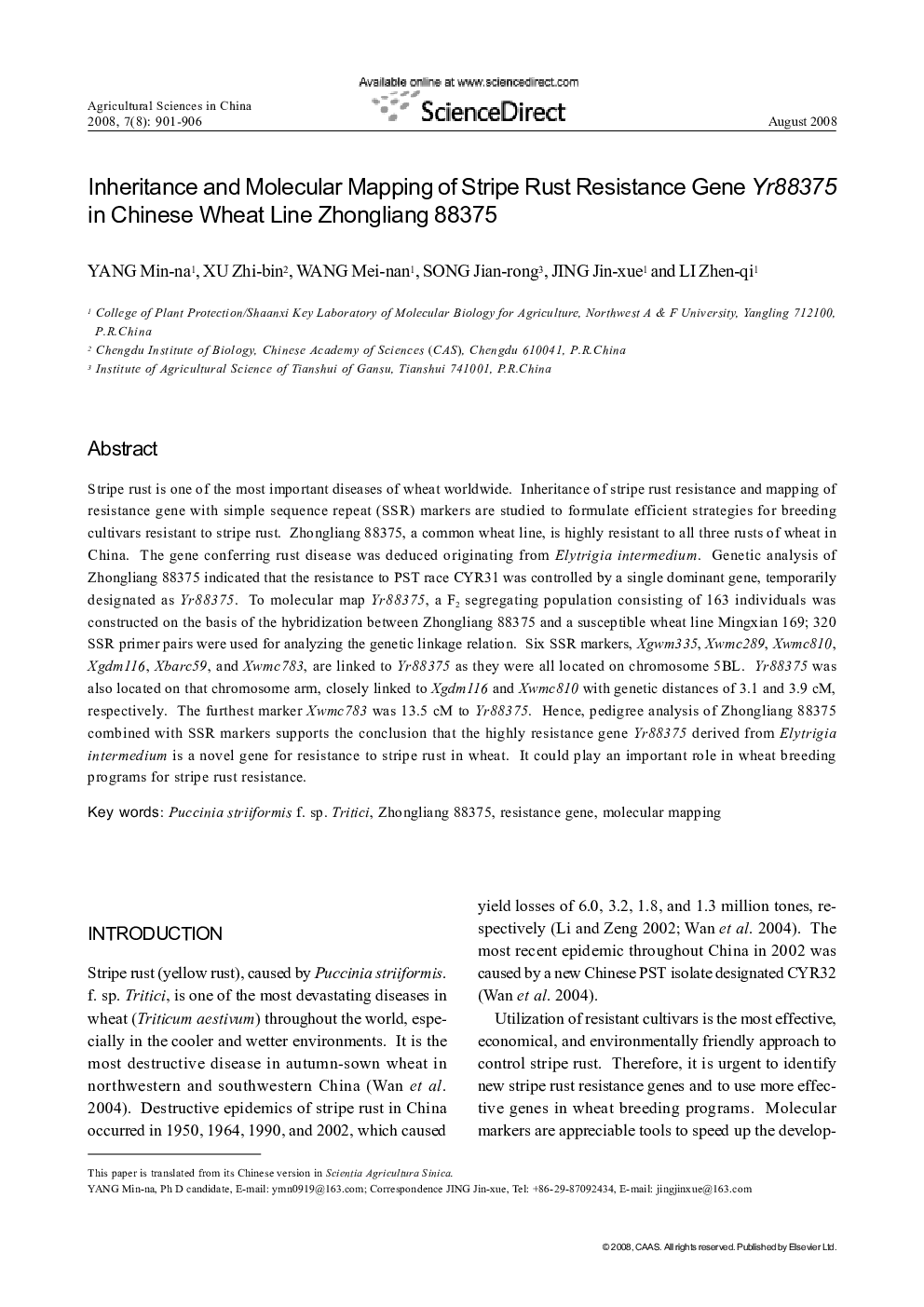| Article ID | Journal | Published Year | Pages | File Type |
|---|---|---|---|---|
| 4490631 | Agricultural Sciences in China | 2008 | 6 Pages |
Stripe rust is one of the most important diseases of wheat worldwide. Inheritance of stripe rust resistance and mapping of resistance gene with simple sequence repeat (SSR) markers are studied to formulate efficient strategies for breeding cultivars resistant to stripe rust. Zhongliang 88375, a common wheat line, is highly resistant to all three rusts of wheat in China. The gene conferring rust disease was deduced originating from Elytrigia intermedium. Genetic analysis of Zhongliang 88375 indicated that the resistance to PST race CYR31 was controlled by a single dominant gene, temporarily designated as Yr88375. To molecular map Yr88375, a F2 segregating population consisting of 163 individuals was constructed on the basis of the hybridization between Zhongliang 88375 and a susceptible wheat line Mingxian 169; 320 SSR primer pairs were used for analyzing the genetic linkage relation. Six SSR markers, Xgwm335, Xwmc289, Xwmc810, Xgdm116, Xbarc59, and Xwmc783, are linked to Yr88375 as they were all located on chromosome 5BL. Yr88375 was also located on that chromosome arm, closely linked to Xgdm116 and Xwmc810 with genetic distances of 3.1 and 3.9 cM, respectively. The furthest marker Xwmc783 was 13.5 cM to Yr88375. Hence, pedigree analysis of Zhongliang 88375 combined with SSR markers supports the conclusion that the highly resistance gene Yr88375 derived from Elytrigia intermedium is a novel gene for resistance to stripe rust in wheat. It could play an important role in wheat breeding programs for stripe rust resistance.
